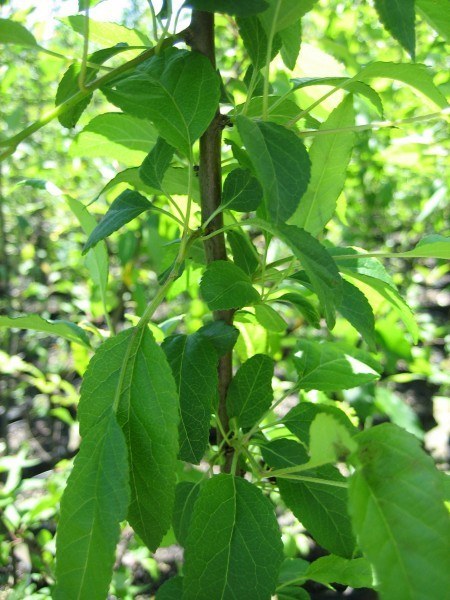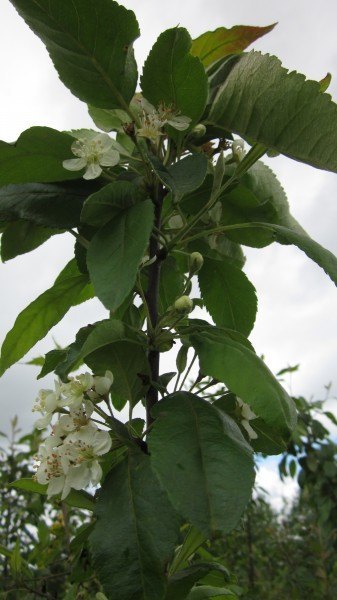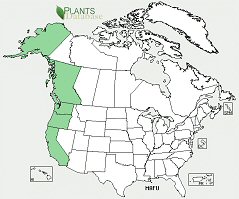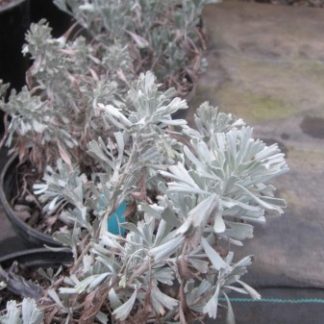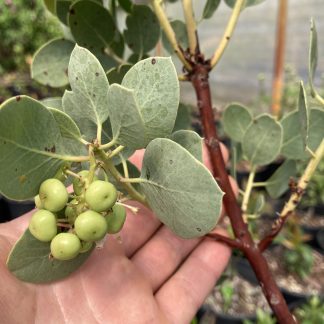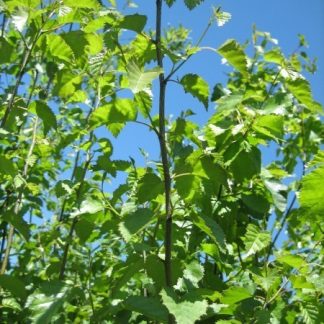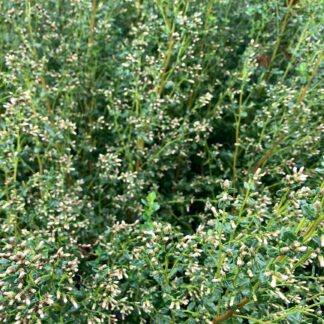Pyrus fusca
western crabapple
Habit: this deciduous shrub can grow as a multi-stemmed shrub or small tree with a rounded shape and reaching heights of 40 ft (12 m) tall. The bark furrows with age. The bright green leaves are elongated to oval, with toothed margins, and occasionally irregularly lobed. Small sharp shoots, similar to thorns, are actually spurs from which the flowers and fruit emerge. Appearing in spring, April-May, the fragrant flowers have 5 white to pink colored petals and are in flat topped clusters. Fruit is small, oblong and yellow to dark red. In fall the leaves turn to a reddish color.
Ecology: only found in the Pacific Northwest from Southern Alaska to Northern California from the coast inland to the Cascades at low to mid elevations, up to 2600 ft (800 m), usually in moist areas such as coniferous forests, bogs, swamps, and wetlands.
Growing Conditions: full sun to partial shade, in moist to wet soil. It has a tolerance of heavy clay soils and wet winter weather as well as the drier conditions in the summertime once established.
Fruit is edible and tart; birds enjoy the fruit, and the protection the seemingly thorny branches give them. Bark and seeds contain cyanide, so take precaution.
Always seek advice from a professional before consuming or using a plant medicinally.
Specs
Deciduous Shrub
6-40 ft (2-12 m)
6-40 ft (2-12 m)
3-8

